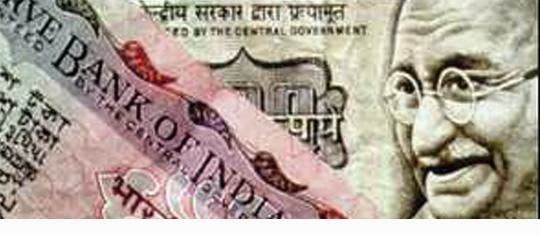
India will soon revise the way it measures gross domestic product to reflect under-represented and informal economic sectors, two government sources said, in an initiative that is expected to show the economy is larger than previously thought.
India usually revises the method of calculating national accounts and other macro data every five years, bringing in a newer base year and adjusting for changes in the economy.
The new government of Prime Minister Narendra Modi, which is committed to raising economic growth and slashing the fiscal deficit, plans to adjust the measurement early in 2015, a senior official at the Ministry of Statistics said.
“We plan to release GDP data based on the 2011/12 base year by early next year, that could theoretically revise up the growth estimates,” the official said, requesting anonymity as he was not authorised to speak to media.
The ministry currently takes 2004/5 as the base.
India’s informal economy and service sector accounts for over three-fifths of its $1.8 trillion economy. But precise data is unavailable for these segments and the government relies on surveys and samples to calculate their growth.
This is combined with actual output numbers for mainstream industry to produce the GDP data.
In March 2010, when India last revised the national accounts, annual economic growth estimates were upwardly adjusted by 0.8 to 1.7 percentage points for four years, allowing the previous government to take credit for the country’s highest-ever stretch of economic growth.
Pronab Sen, India’s former chief statistician and current chair of the National Statistics Commission, said the planned adjustment would likely reveal that Asia’s third-largest economy is bigger that previously reckoned in absolute numbers.
“Basically, we have an upward revision because some sectors are not included in the current data,” he said, mentioning higher productivity among informal manufacturing and services firms as well as the advent of new sectors.
Sen predicts that India’s economy, which grew by a stronger-than-expected 5.7 percent in the quarter ending in June, will grow 6 percent this fiscal year even without the planned revision.
The 2010 revision almost doubled the estimated contribution to the economy made by coaching and tuition and gave substantially more weight to the construction, trade and hotel industries. The importance of beauty salons, communication and railways declined.
Any upward revision this time will be a big boost for Modi and his Finance Minister Arun Jaitley, who is trying to meet a fiscal deficit target of 4.1 percent of GDP and convince global rating agencies like Standard & Poor to upgrade India’s sovereign ratings.
Economic growth has almost halved below 5 percent in the past two years, too slow a rate to provide jobs for the large numbers entering India’s labour force.
Officials said the revision would not be on the scale of a similar exercise in Nigeria this year, which almost doubled the measured size of the African nation’s economy.
Several European economies have also made revisions to their growth measures, resulting in substantially higher estimates of economic activity.
No comments:
Post a Comment